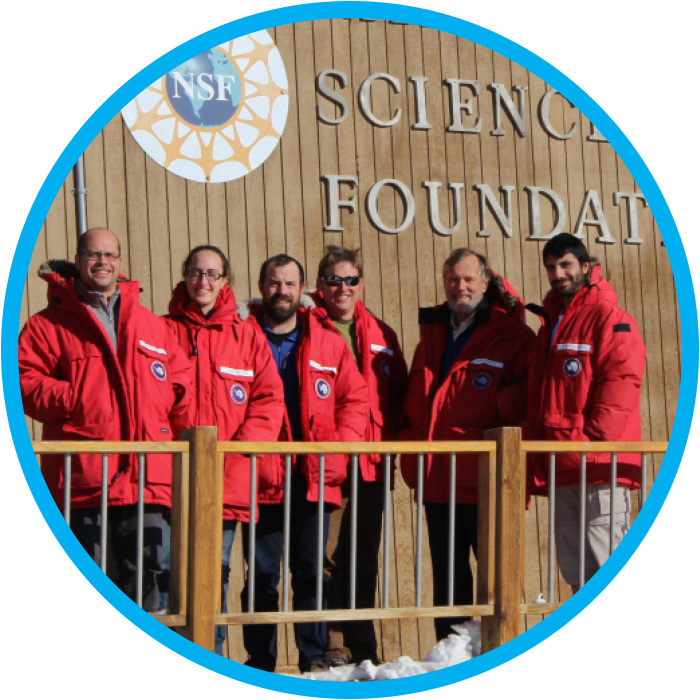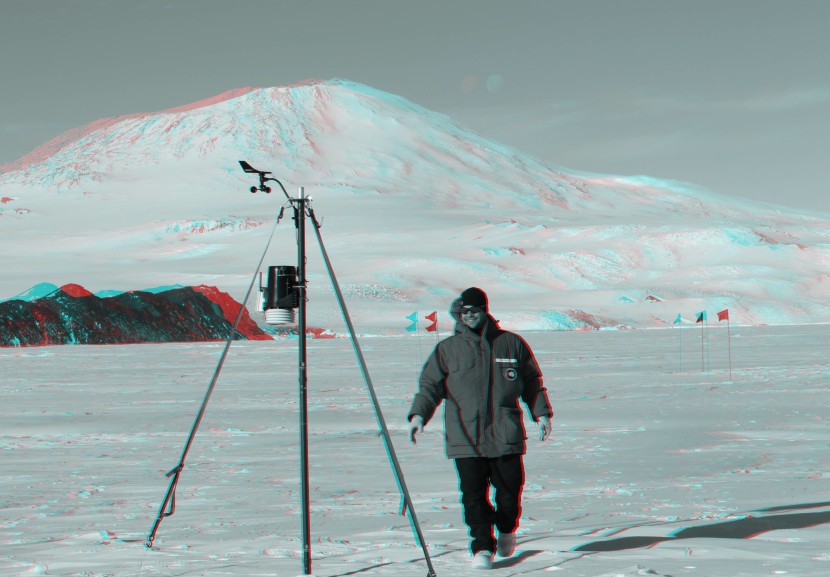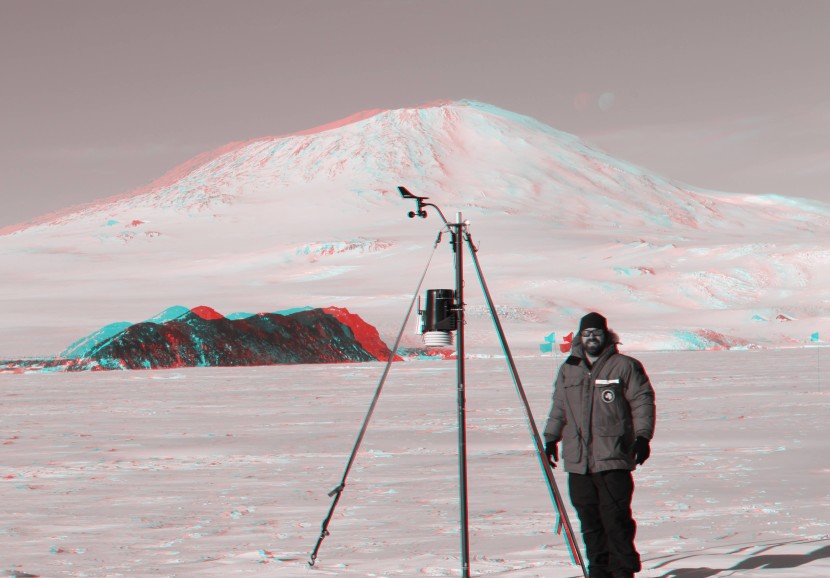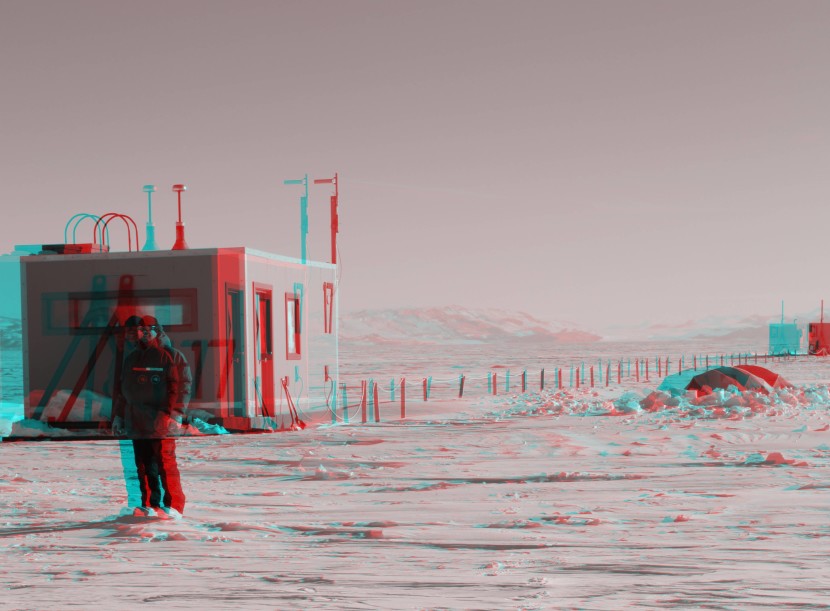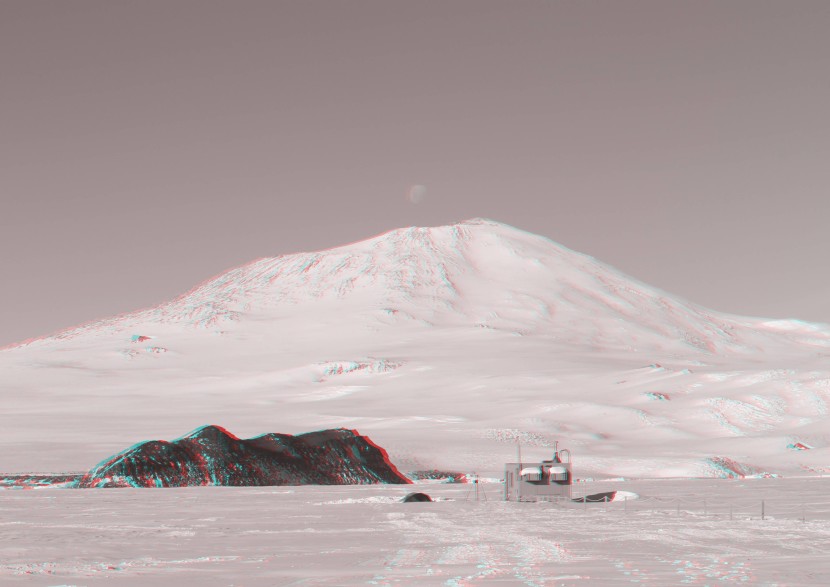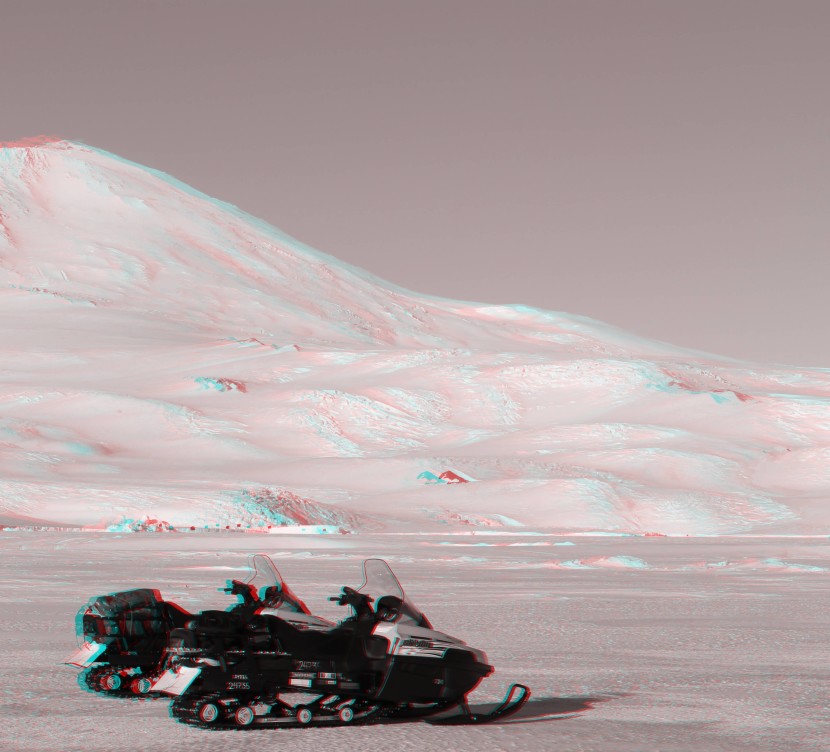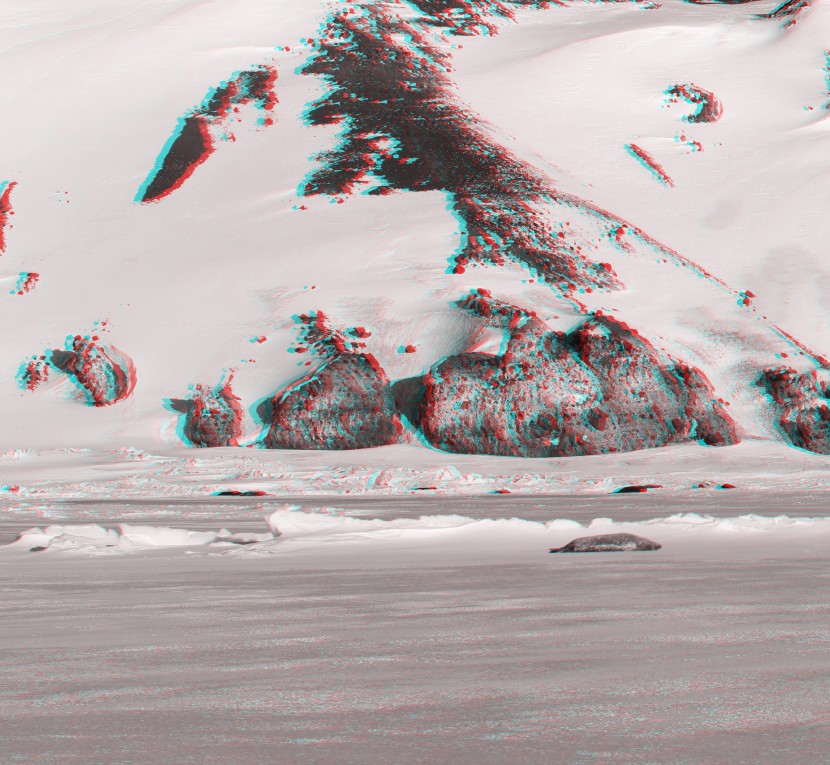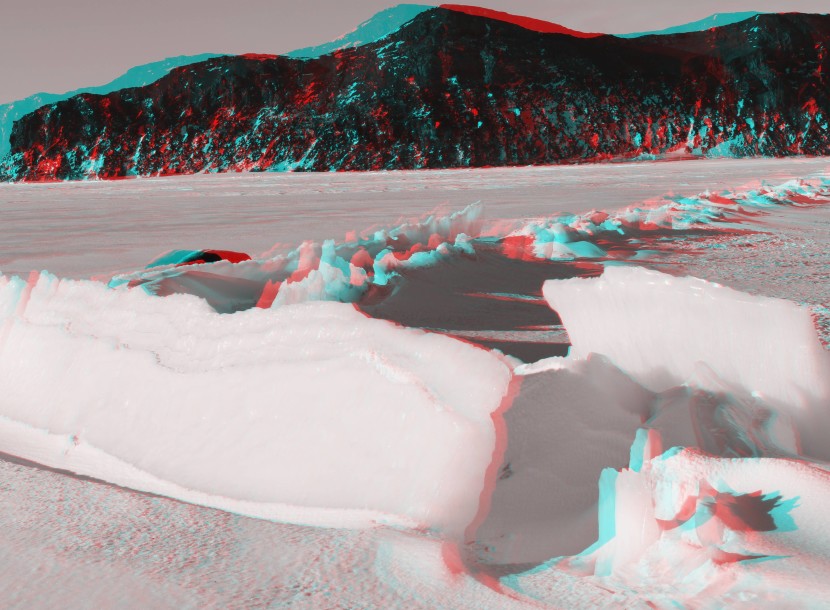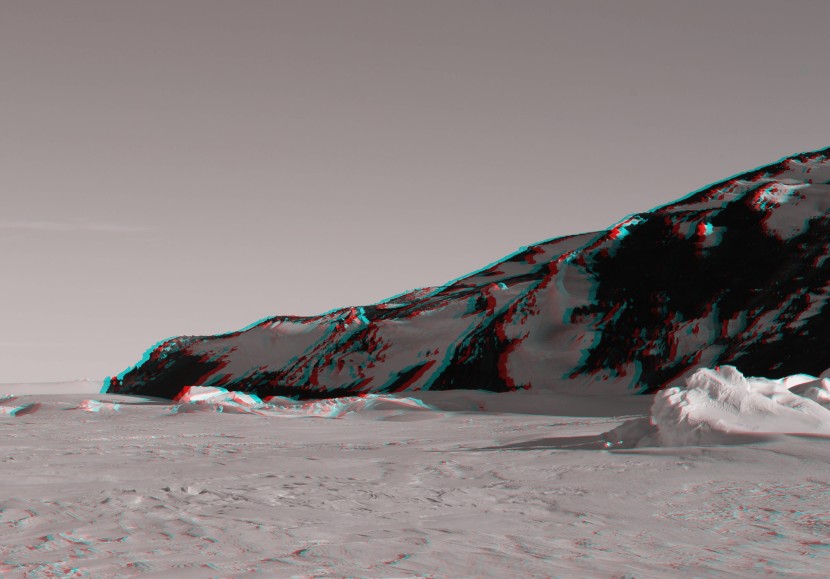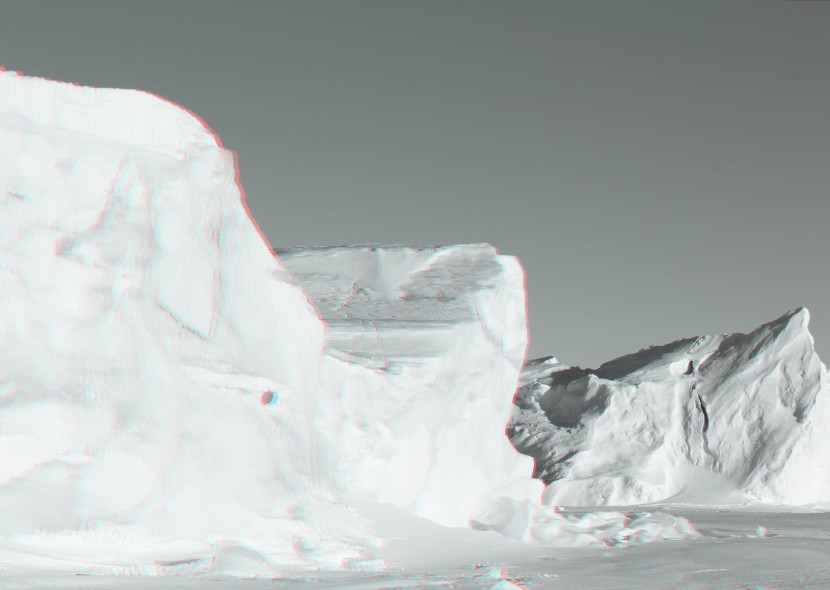
_Peter DeCarlo
DeCarlo is an associate professor in the College of Engineering and in the College of Arts and Sciences.
Breathe. Feel the deep pinch of pure cold.
lonesome_lab
McMurdo Station boasts about 1,000 residents during the summer peak and a skeleton crew of about 250 who “winter-over.”
With temperatures in Antarctica sometimes sinking to minus 110˚F, the southern continent can be as frigid as the surface of Mars.
But that icy austral air has much to tell science.
The_Six
The research team, at McMurdo Station.
Last October, a team of Drexel researchers led by Peter DeCarlo, an assistant professor in the Department of Civil, Architectural and Environmental Engineering and the Department of Chemistry, traveled to Antarctica on a mission funded by the National Science Foundation. They spent weeks collecting air samples that will help scientists worldwide better understand the polar atmospheric chemistry and its links to the ice core record and ozone depletion.
Using sensitive, high-resolution sampling instruments never before deployed in Antarctica, they amassed one of the largest and most detailed datasets of the continent’s airborne particles ever assembled. Their instruments detailed particle size and composition and collected general atmospheric readings for analyzing the interplay between particles, wind, sun and trace gases such as ozone gases — in particular, the team sought to investigate a negative correlation between ozone totals and particle size.
After a second trip planned for late 2015 and the completion of their study, the team will have millions of data points that will become publicly available to anyone interested in studying the Antarctic atmosphere.

weather_permitting
Flights into and out of Antarctica are scheduled every two days, but sometimes entire weeks pass without a visit. Visibility vanishes perilously when the wind picks up and blows snow across Pegasus Field, a year-round landing strip on top of a blue ice shelf about an hour from McMurdo Station. Blue ice areas are known for having little snow accumulation, which makes them safe for wheeled (rather than ski) landings.
Researchers at the station are able to leave McMurdo only when the weather permits. All travel is banned under “Condition 1.” Under “Condition 2,” travel off-base is restricted to enclosed vehicles. Under “Condition 3,” researchers are free to travel outdoors and flights continue as scheduled.
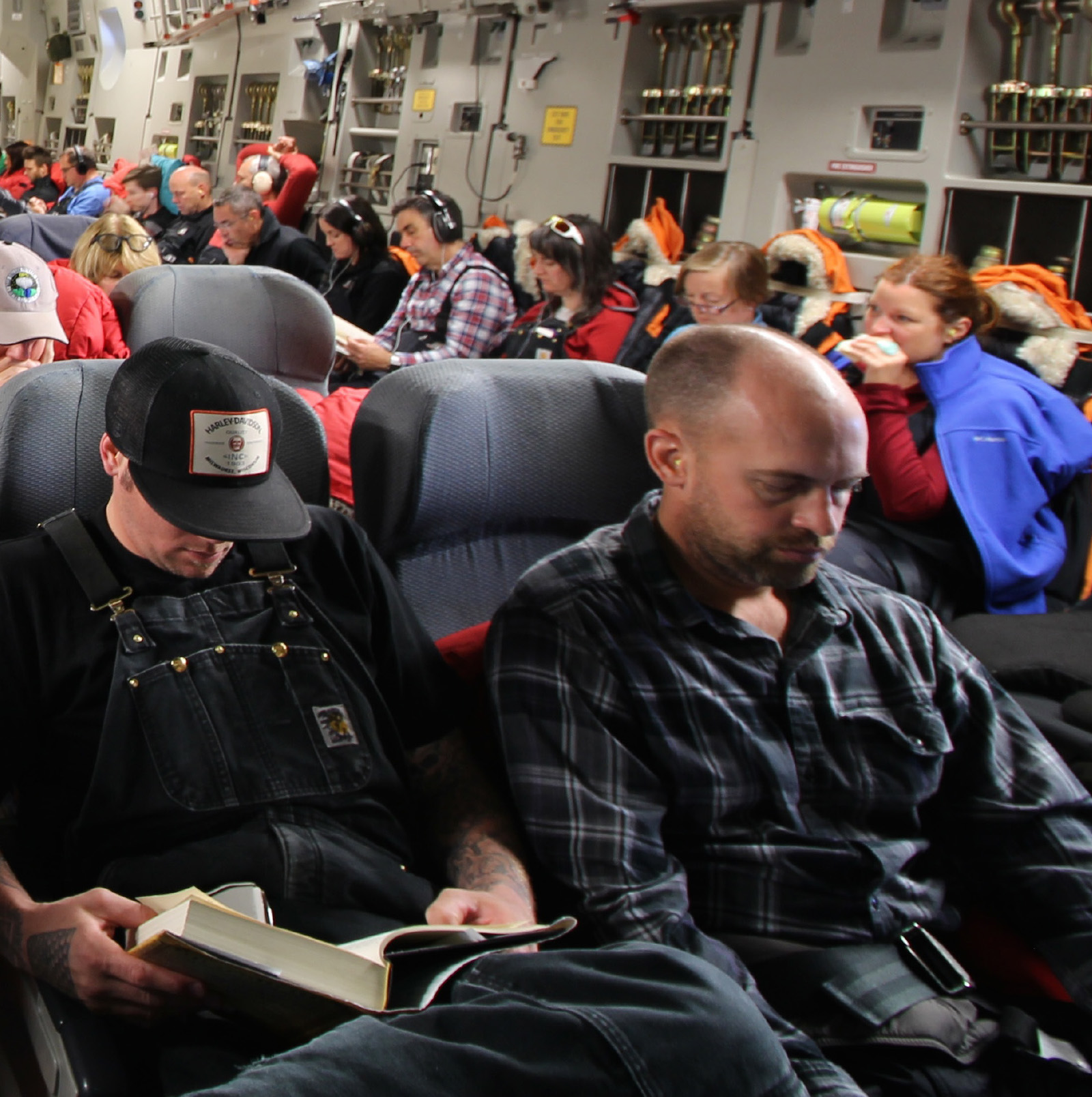
Economy_class
The only way to reach Antarctica is through an unprepossessing terminal at the Christchurch International Airport in New Zealand. Through it flow researchers and support workers from around the world headed for McMurdo Station, the U.S. base in Antarctica that serves as the gateway to much of the continent. Before boarding, passengers are required to prepare for the 6.5-hour flight by suiting up in special cold-weather gear. Goggles, check. Balaclava, check. Your choice between mittens and gloves.
Flights to McMurdo are aboard massive Boeing C-17 military cargo planes contracted through Lockheed Martin by the National Science Foundation. Uniformed Air Force personnel serve as the cabin crew, and passengers ride inside a hold designed to haul cargo as large as Army tanks. Early in the season, seats are removed from the plane’s interior to make room for storage pallets filled with fresh food and supplies for the station. Later in the season, passengers outnumber cargo. On this particular flight, Drexel researchers were one of about 10 research teams heading to the station at the start of its spring/summer season to perform research projects that can only be done in the unique Antarctic environment.
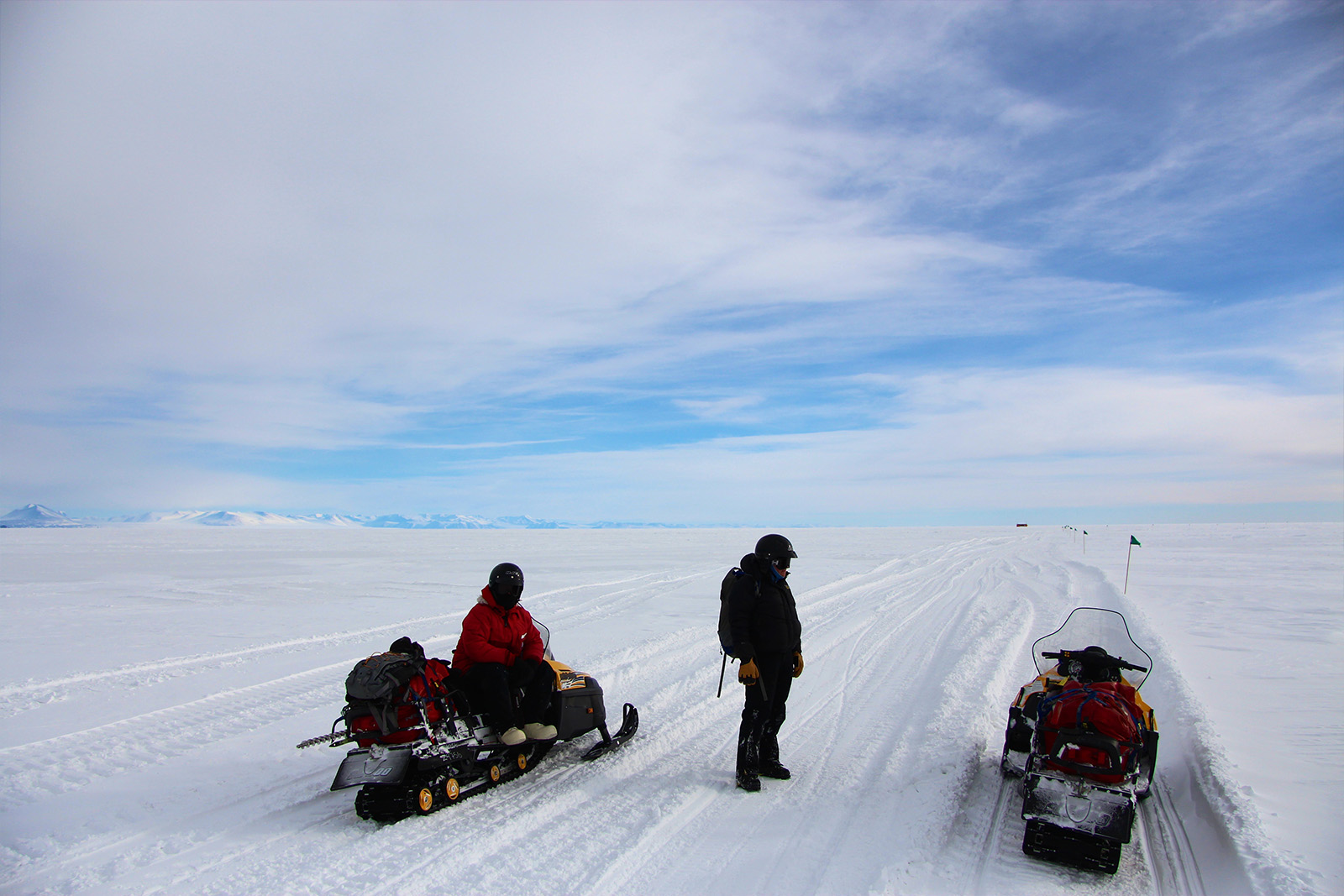
Lost_Highways
Snowmobiles are the preferred mode of transportation in Antarctica. Lighter and faster than the large transporters known as PistenBullys, snowmobiles can cover in 30 minutes the same distance that takes a PistenBully two hours — perfect for scouting for a research base on the ice shelf of McMurdo Sound. Researchers chose a site about 19 miles from McMurdo Station, on top of six feet of sea ice, where winds bring air particles in both from land and sea. They marked their route out onto the ice with flags every 50 to 100 meters so that when visibility turned poor, they could find their way back to McMurdo.
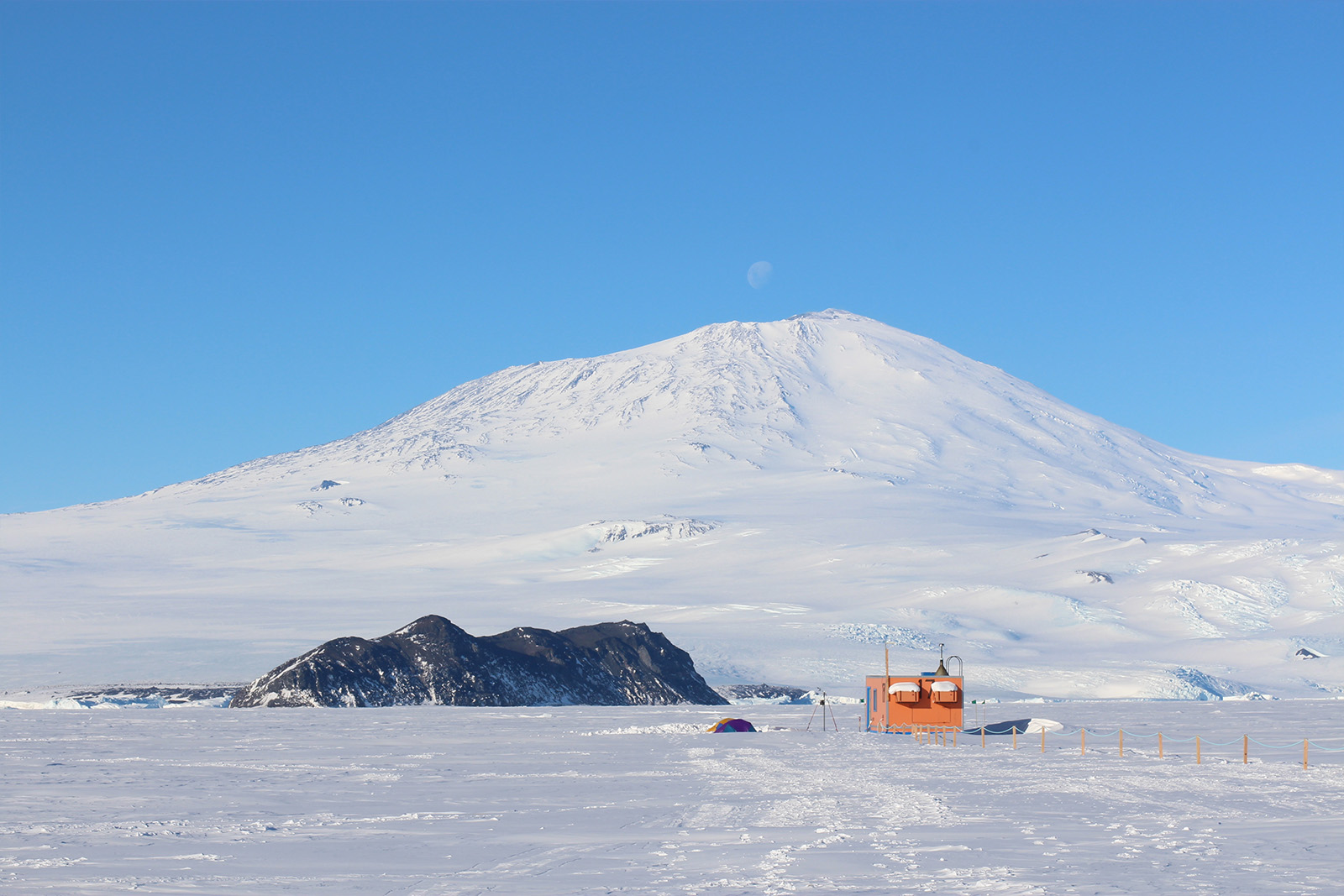
room_with_a_view
A small fishing hut contained everything the team needed to conduct their research. Positioned on top of skis, the hut was hauled out onto the ice by large bulldozers and powered during the study by two diesel generators. As cold as it was outside, the equipment sometimes heated the tiny space to 90˚F, forcing the team to install remotely controlled fans to cool down the instruments. Antenna on the roof brought spotty Internet service via satellites, keeping the hut’s control panels connected to the team back at McMurdo Station, if only intermittently. From there, the team could monitor instrument readings as they poured in every few minutes, 24 hours a day, for five weeks.
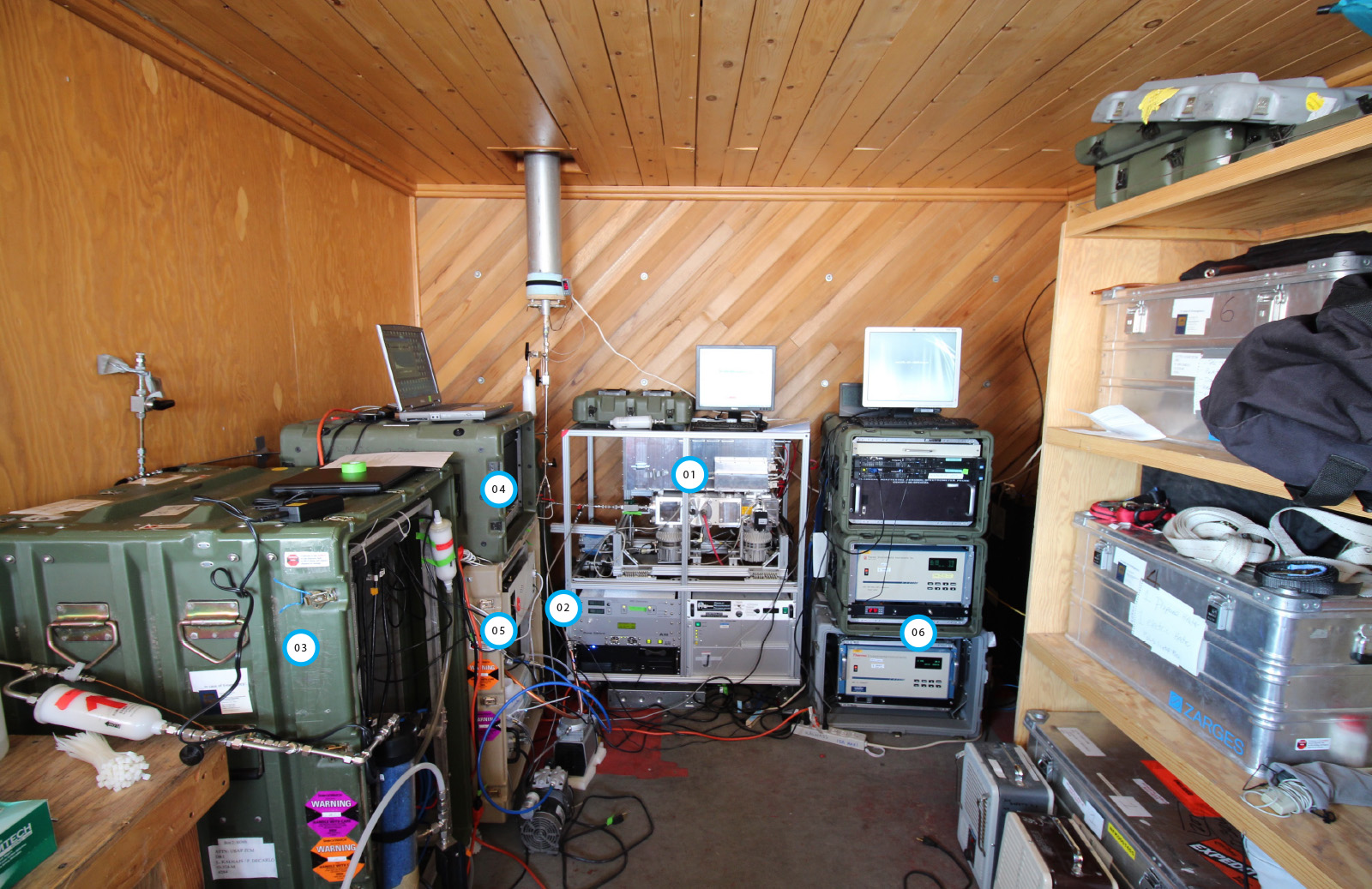
data_center
The team’s research hut contained about $1 million worth of sensitive air monitoring equipment. Collectively, the instruments and the data they recorded represent a significant leap forward in time resolution and sensitivity compared with existing studies on Antarctic air particles.
_01
The Aerosol Mass Spectrometer measures minute-by-minute changes in the chemical composition and size of particles in the air smaller than 1 micrometer — or less than 1/100th the diameter of a hair. It is used by researchers all over the world as a powerful method for measuring submicron particle composition, size and concentration — but never before has the instrument been used in Antarctica. Most existing measurements of particle composition in Antarctica have been made using filter and impactor particle collection and off-line chemical analysis of samples. But these tools have limits. Filter collections and off-line analysis take a long time (days as opposed to minutes) to collect sufficient concentrations of particles, which can introduce sampling artifacts, and they have limited size distributions.
_02
Filter collections (not visible in this photo) were used to verify that the spectrometer was getting correct readings.
_03
Another device used for verification was the Scanning Electrical Mobility Sizer. It uses radioactive polonium to give particles a charge, which then enables the device to determine particle size distribution in the atmosphere from 20 nanometers to 1 micrometer.
_04
This box contains an ultra-high sensitivity aerosol spectrometer that sizes particles optically using lasers.
_05
The Particle Into Liquid (PILS) Sampler is a prototype of a new design that was being used in extreme cold for the first time on this trip. This is the only instrument on the trip other than the filters that can be used to measure particle composition.
_06
The gas phase instrument measures ozone (O3) and NOx (nitrogen dioxide, NO2, and nitrogen monoxide, NO) in the atmosphere. The team brought this along because when sun shines on snowpack at low wind speeds, the snow releases N0x through photolysis. The team detected a strong pattern of N0x increasing during daylight hours.


